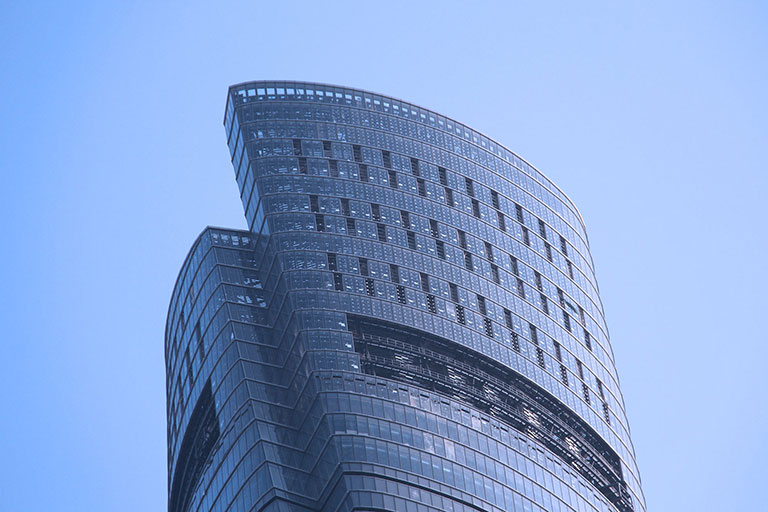While its impressive height and iconic ‘corkscrew’ design certainly catch the eye, it’s the Shanghai Tower’s peerless green credentials that will be its true legacy.
Dominating the Shanghai skyline, the world’s second tallest tower stands at 632m and comprises 128 floors divided vertically into nine zones, including shops, offices, hotels, and observation decks offering unparalleled views of the cityscape.
Designed by architecture firm Gensler, the tower’s form twists and curves by 120° over its full height to give a beautiful corkscrew effect. This is no mere aesthetic choice, however, with the design thoroughly verified in a series of wind tunnel tests to produce a structure that reduces wind load by 24 per cent. This means the tower can pierce the clouds while standing firm against the powerful typhoons which swoop in from the East China Sea.
Reducing wind load also reduced the amount of materials needed in the tower’s construction by as much as 25% compared with a more traditional design of a similar height, saving an estimated CN¥389m ($58m). This also made the tower lighter, a crucial consideration given the soft soil that forms most of Shanghai’s ground area.
Forming the spine of the tower is a 30 square metre concrete core reinforced by structural steel framing in a belt truss and outrigger system. This core is then surrounded by 12 columns tied together to provide additional support and make the structure incredibly sturdy.
 The tower’s corkscrew shape improves its resistance to the high speed winds that can batter the Shanghai skyline
The tower’s corkscrew shape improves its resistance to the high speed winds that can batter the Shanghai skyline
Taller, safer, greener
While stunningly beautiful and precision engineered for structural strength, the main event for the Shanghai tower is its 2012 award of the Certificate of Green Building Design with China’s highest star rating and its LEED Gold certification from the US Green Building Council.
Sustainability and energy efficiency were fundamental to the tower’s design, with the building able to claim the status of the world’s greenest skyscraper. Part of this is the structure’s transparent ‘second skin’ that envelops the whole building, with the twin-layered curtain wall at its heart suspended on massive high-strength steel cantilevered trusses.
Designed to let in maximum daylight, while providing an insulating layer to conserve energy, this system warms cooler outside air in the winter months and dispels heat from the interior during warmer weather. In addition, a third of the tower’s area is designated as green space, which allows for the use of a trigeneration system that uses a heat engine to simultaneously produce electricity, cooling and heating.
The tower also collects rainwater for internal use and is crowned with 270 wind turbines built into its exterior that make use of Shanghai’s high winds to power the building’s external lighting.
 At the tower’s peak, 270 wind turbines are set into its facia, providing power for external lighting
At the tower’s peak, 270 wind turbines are set into its facia, providing power for external lighting
Scaling the heights
Shanghai Tower boasts elevators that are among the world’s fastest. Visitors can travel from the ground floor to the building’s observation deck at over 20.5 metres per second, which at the time of installation was the fastest elevator speed ever recorded. This means travelling 120 floors in under a minute.
The Shanghai Tower represents a true game changer in sustainable, efficient construction. Leaning on a forward-thinking green strategy, the lightweight possibilities offered by ambitious design and precision shaped and installed steel components, this building reaches for the heavens in more ways than one.
Images: Gensler